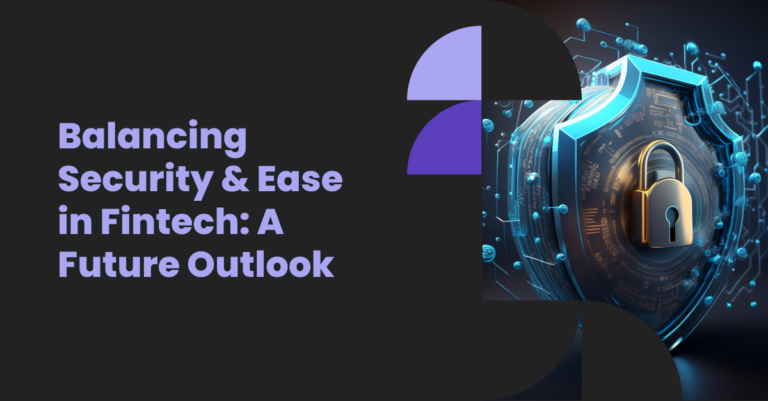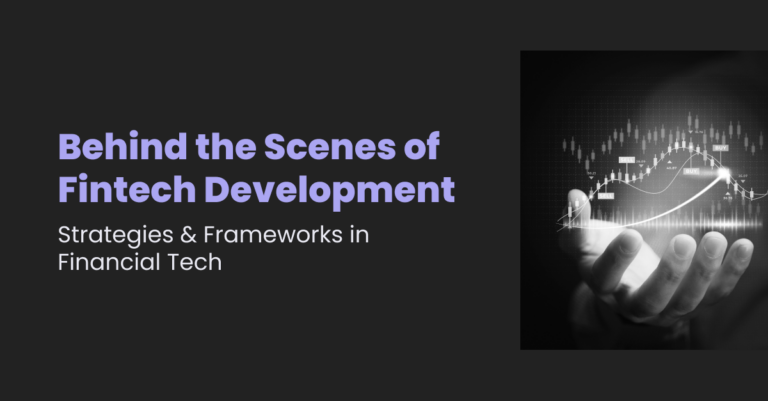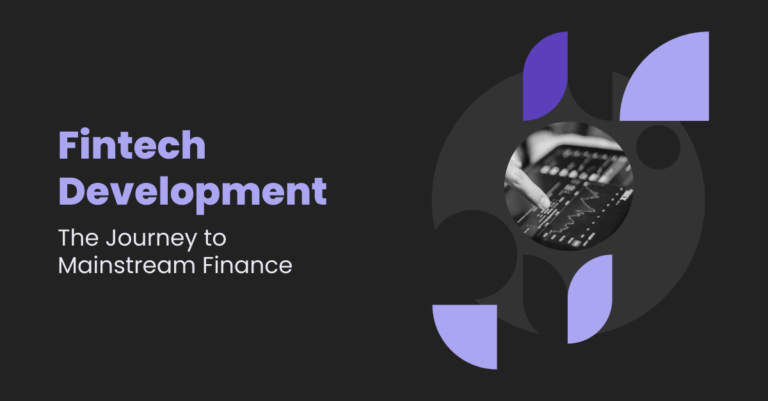The global patient engagement software market is expected to grow at a compound annual growth rate (CAGR) of 21.4% from 2021 to 2028. Despite such fast growth and a plethora of patient engagement tools available on the market, many physicians are either uncertain about patient engagement technology or are unaware of its true potential.
Patient engagement plays a transformative role in medical treatments and has been reshaping patient-provider relationships for a long time. Patient engagement solutions automate such services, providing convenience to all the parties involved.
This article will comprehensively explain what patient engagement software is, list the range of benefits it offers, and delve into the different types of this software. In addition to this, it will describe the main features that an engagement tool ought to possess before sharing the idea of patient engagement app development.
What Is Patient Engagement Software?
Patient engagement software is a technology used by healthcare providers to automate the processes involved in communicating with patients. Such a tool makes it easier and more efficient for a patient and their healthcare provider to engage with each other. Apart from communicating with patients, a patient engagement solution also provides educational resources and manages the patient-provider relationship.
Initial versions of such software were limited to automated appointment reminders, and there was not any significant communication between patients and healthcare providers. Today, however, with the advancement of technology, patient engagement software development has seen immense success, with these powerful tools offering a highly useful combination of features. In fact, touchpoints that previously required the physical presence of patients, such as registration or check-in, are also now integrated into said software.
What makes such solutions even more popular is the existence of custom patient engagement software, which allows the creation of a tool meant to facilitate a particular business specifically. Read on to find out more about this particular technology and how to build your patient engagement software solution.
Patient Engagement Technology Benefits
The significance of patient engagement apps in today’s time and age is undeniable, considering how they lead to consistency and reliability in the business. Irrespective of the scale of a business, automation surpasses manual labor in terms of efficiency and time consumption. However, more importantly, such automated solutions are not just an attractive option to consider but rather a necessity to stay competitive in the market.
No matter the type of medical health center is — from a small dentist office to a large multidisciplinary hospital facility — the benefits of patient engagement software are numerous.
- Although there are initial costs of buying or creating such a system in-house, these costs are usually predictable. The maintenance costs to run such solutions are also generally low. Thus, having invested in a patient engagement solution once, a healthcare center can cut down on its recurring costs. The initial cost of the installation of an engagement software is far less than these recurring costs.
- A patient engagement system reduces patient no-shows. This refers to the patients who do not show up to an appointment, driving up the cost of healthcare and creating gaps in the schedulers of medical practitioners. More importantly, this can lead to difficult complications later on for the patient. These automated systems can send scheduled reminders to ensure the patient shows up for an appointment. Additionally, they offer them the chance to cancel or reschedule an appointment well before its actual time.
- Since automated tools reduce the amount of manual input required, there is increased staff productivity and efficiency. Employees who were engaged with repetitive and trivial tasks earlier can be assigned to perform more skilled work.
- Increased revenue is also reported as one of the major benefits of a patient engagement platform. By ensuring the patients are following the set schedule, increasing a practice’s visibility in the market, heightening brand loyalty, and keeping medical providers’ schedules full, revenue is generated in multiple ways by such systems.
- By prompting the patients for their feedback regarding their experience via post-treatment surveys or other methods, doctors get the chance to adapt to individual patients’ needs.
Different Types of Patient Engagement Solutions
Since there exist different variants of patient engagement software solutions, determining the right type of software according to your business requirements is crucial. Otherwise, a generic system might lead to the wastage of resources, capital, and time without even delivering the expected results.
Detailed below are a few of the most significant types of patient engagement software that can enable digital healthcare and enhance patient engagement:
Patient Feedback Software
Patient feedback software allows patients to leave feedback regarding their experience of receiving medical treatment. Such a system can help an organization understand patient satisfaction better and automate its online reputation management efforts.
It is imperative for healthcare providers to understand that patients need a positive experience and adequate care while being treated. Keeping patients satisfied increases not only their loyalty but also their likelihood of recommending you to others. However, in order to gauge patients’ satisfaction, their feedback is required; you need to know whether your procedures and practices are liked and which of your services are lacking. To further make this process useful and hassle-free, it would help to automate it by creating a digital patient engagement platform for receiving feedback.
An application for patient feedback offers multiple benefits, some of which are listed below.
- It helps identify the gaps in services and areas requiring improvement.
- It improves the satisfaction level of patients.
- It fosters loyalty towards your organization or brand.
Patient Check-In Software
Patient check-in software is the entry point for any patient since this is where their interaction with a medical health center or organization begins. It may involve downloading an application and allows you to start filling out your appointment details. You have the option to save this application at any point and continue right where you left off once you arrive at the hospital.
A patient engagement software solution that allows patients to check-in once they arrive at a location or begin interacting with the hospital staff brings various benefits, such as the following:
- Patients can be given an added, timely resource.
- The check-in process can be performed more efficiently.
- Financial outcomes can be improved.
When designing patient engagement solutions for hospitals, particularly check-in, collect any information that will uniquely identify a patient and explain their medical history. For instance, the following are usually collected by such software:
- Contact information
- Health screeners, e.g., Covid-19
- Medical history
- Details of current illness
- Insurance card
Patient Registration Software
With patient registration software, patients are offered a modern way to register themselves at healthcare centers. Customizable forms and secure registration are provided for patient intake. This automates the job of the receptionist or front desk manager, allowing them to work on other tasks while patients fill out forms. These forms are highly configurable and can be edited to add or remove questions as per the registration requirements.
That being said, this patient engagement solution is more than just digitized registration forms. Such a system takes care of all the activities associated with registration, including, but not limited to, setting appointment times, notifying relevant hospital personnel of upcoming appointments, sending alerts and reminders to the patients, and communicating any changes in the registration details.
Patient Communication Software
Patient communication software is intended to make engaging with patients easier and efficient. Such solutions are intended to reach more patients in more ways. Unlike the three aforementioned types of patient engagement software, this type does not perform one dedicated task. In fact, depending upon the exact requirement of a health center, patient communication solutions can offer different features. Some of the most common features are explained below.
- Automated phone calls can be made to reach a patient in real-time. This feature includes a professional recording of the office’s name.
- Two-way text messaging can be enabled directly from the dashboard to hold chats with patients. The history of these chats is saved in the system on the clients’ profiles.
- Marketing services can also be automated whereby patients are sent promotional offers, discounts, and newsletters.
How to Engage Digitally?
In the past, patients and doctors had a strictly formal relationship where the doctor recommended a certain practice, medication, or surgery to a patient, and the patient could just accept or reject it. However, patient engagement supports the notion of the patient and their physician interacting with each other to thoroughly discuss the patient’s condition and reach cordial decisions that both of them fully agree with. This practice has been accelerated due to the digitalization of the healthcare sector and has particularly seen a drastic increase during the lockdown owing to the Covid-19 pandemic. In fact, it is believed that the pandemic caused the digital healthcare industry to move forward by 4 years.
To further understand how digital engagement with patients works, let’s consider the patient engagement framework.
What Are the Five Phases of the Patient Engagement Framework?
The patient engagement framework is a model created to guide healthcare organizations to develop and strengthen their patient engagement strategies using eHealth tools and resources. This framework consists of 5 stages.
- Inform me is meant to attract the patients by sharing online sources of educational content with them.
- Engage me refers to attracting said patients and then retaining them by various practices.
- Empower me is based on the idea of shifting power from the provider to the patient. It means partnering with them to create efficiency and motivate them to actively participate in all parts of their treatment.
- Partner with me is where the patient truly becomes a partner. E-tools are available to the patient, and they can engage in shared decision-making with their healthcare provider and other specialists.
- Support my e-community is the final step where the patient defines their own community by interacting with the entities involved in a healthcare environment.
Following this framework, digital engagement can be practiced, and healthcare organizations can create patient engagement software according to their business requirements.
Main Patient Engagement Tools
To comprehend patient engagement technologies in further depth, it can be helpful to learn the features that these applications provide. Knowing what such tools have to offer can make it easier to decide whether they can provide the kind of results you are expecting.
Here are some of the most common and sought-after engagement software features.
View-Download-Transmit
This feature refers to the practice of viewing, downloading, and transmitting medical documents. Users have access to all their health records on the software and can view them at any time. They can also share their discharge summaries, lab results, or imaging results with their doctors through the system.
Registration
Registration is among the most common features available in patient engagement technologies. It allows users to electronically fill and submit forms, provide medical history, and submit records such as immunization certificates and a list of medications.
Scheduling
With scheduling, patients can view the availability of all the relevant doctors and choose a time slot of their own from available time slots during a given day. Although a patient engagement vendor can put the restriction for personnel to approve an appointment before it can be confirmed, this is still an extremely convenient and time-saving feature.
Reminders
This is considered one of the most beneficial features, facilitating both patients and healthcare providers alike. Patients are less likely to miss their appointments if they are regularly reminded of them, and providers are less likely to have gaps in their schedule because of appointments where patients did not show up or failed to reschedule well before time.
Bill Payment
To facilitate the patients in the payment process, multiple options for clearing their dues are available to the patients. This is not only convenient for patients but also useful for doctors since it helps them shorten their revenue cycle.
Patient Education
Physicians are now increasingly engaging with their patients and sending them personalized educational content to help them be more aware of their conditions and make better decisions after discussion with their doctors. The engagement tools have these resources available online, making it quite easy for healthcare providers to deliver them to the required patients.
Marketing
The marketing is mainly done via email, where doctors and other staff from healthcare organizations can engage with patients by sharing practice news or educational resources.
Custom Patient Engagement Software Development
There is no single generic patient engagement tool that works well for all kinds of healthcare scenarios. Buying or creating a generic solution means getting irrelevant features that would not benefit your business at all or compromising on features you actually wanted. To avoid this, you can consider getting custom patient engagement software. This is especially an attractive option for those who wish to stay afloat by keeping up with the rapidly-evolving trends and technologies.
If the idea to create patient engagement software from scratch intrigues you, consult professional custom healthcare software developers from Develux to get you started on this with tailored guidance and expert advice. As Thomas Edison said, “There is a way to do it better. Find it.” Let’s find this way together!
















